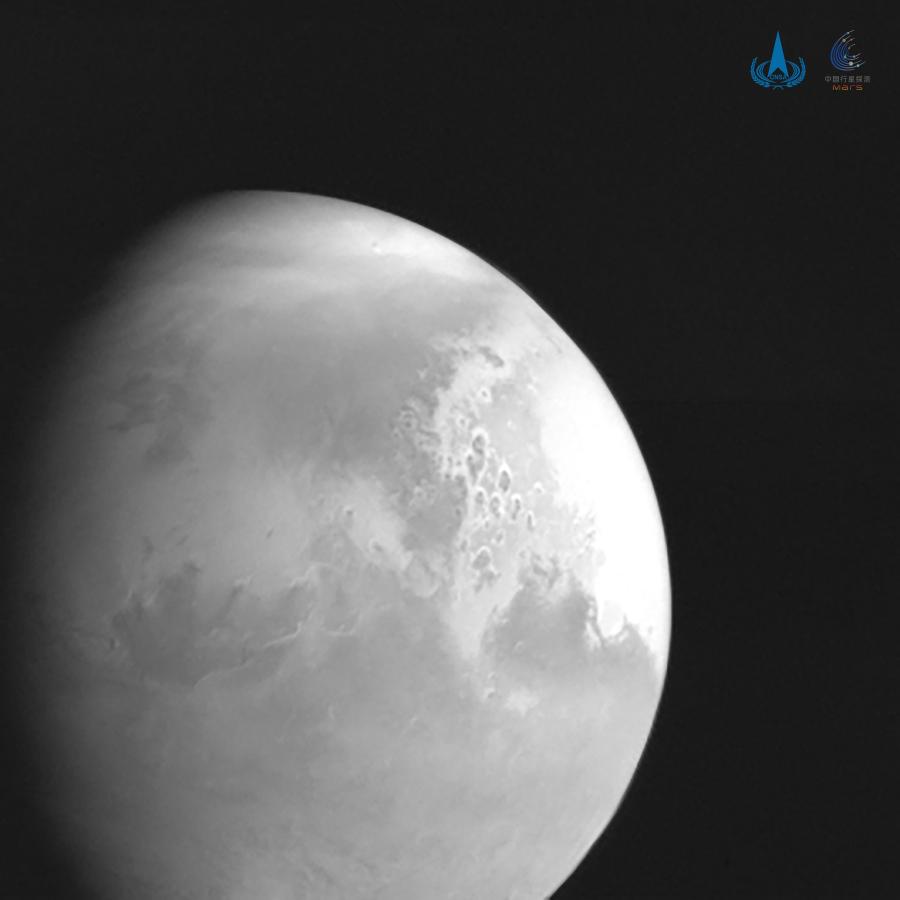
For SpaceUpClose.com & RocketSTEM
CAPE CANAVERAL, FL – China’s first ever mission to reach Mars safely and successfully arrived in orbit around the Red Planet early this morning, Wednesday, Feb. 10, after a seven-month long interplanetary journey and marks the second leg of the arrival of an international fleet of spaceships dispatched from Earth that started less than 24 hours after the first ever probe from an Arab nation (Hope) accomplished the same historic orbital arrival achievement yesterday, Feb. 9 and as NASA’s Perseverance rover barrels towards touchdown on Feb. 18.
The extremely ambitious Chinese Tianwen-1 robotic mission designed to orbit, land and rove on the Red Planet commenced its crucial main engine this morning at 6:52 a.m. EST, Wednesday, Feb 10 to accomplish the history making achievement entering polar elliptical orbit after 202 days voyage through deep space.
“China’s Tianwen-1 probe successfully entered the orbit around Mars on Wednesday after a nearly seven-month voyage from Earth,” according to the China National Space Administration (CNSA).
“A 3000N [674-pound-thrust] engine was ignited at 7:52 p.m. Beijing time, 1152 GMT (6:52 a.m. EST) Wednesday, Feb. 10. to decelerate Tianwen-1.”
Tianwen-1 continues Earths powerful Invasion of Mars in 2021 with an international fleet of orbiters, landers and rovers launched also from the United States and the United Arab Emirates – launched from Earth in July 2020.
“Tianwen-1 entered the orbit around Mars exactly as it was designed,” said Zhang Rongqiao, chief designer of China’s first Mars exploration mission. “We are looking forward to a successful landing on Mars.”
The mission was developed, directed and funded by China’s national space agency – namely the China National Space Administration (CNSA).
The 11,000-pound (5-metric ton) Tianwen-1 probe is the second of three science probes reaching the Red Planet this month.
is the second of three science probes reaching the Red Planet this month.
The United Arab Emirates Hope Probe was the first of the trio and arrived Tuesday morning. Read our story.
China did not provide any live coverage of the Tianwen-1 arrival at Mars, unlike the live TV coverage yesterday by the UAE and NASA upcoming on Feb. 18.
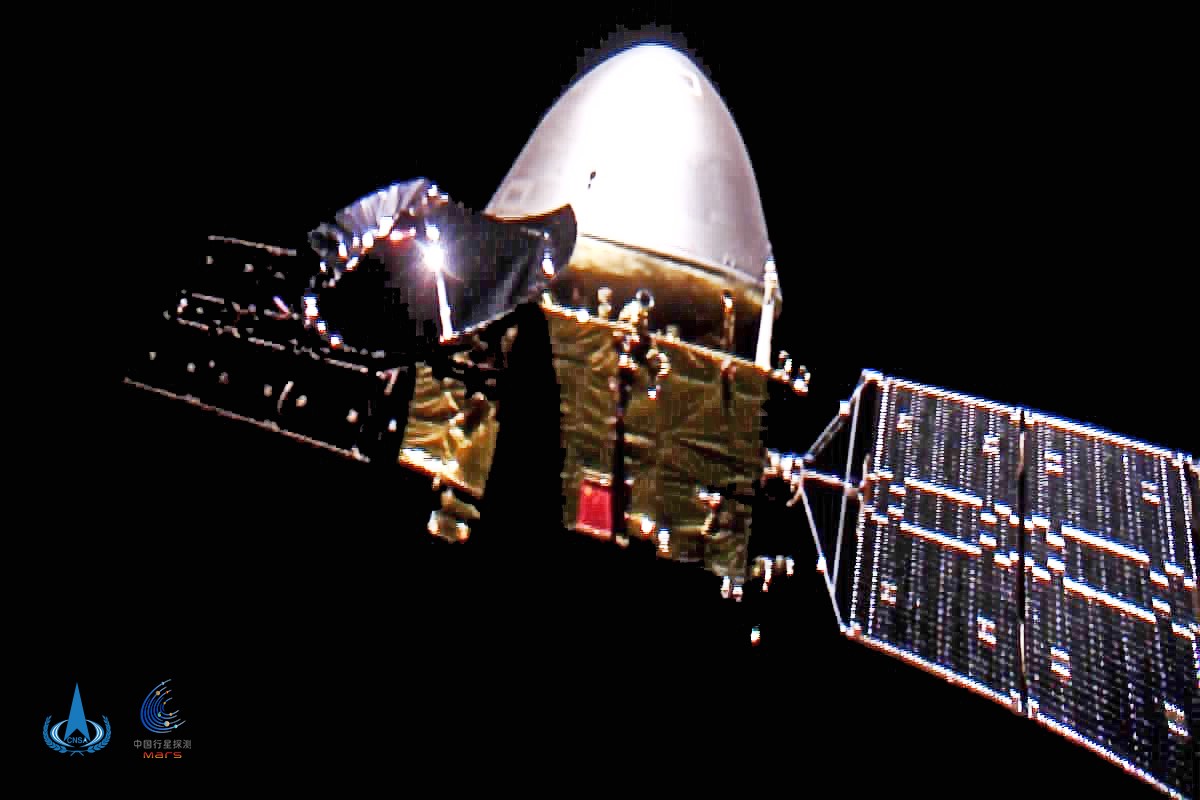
China thereby became only the sixth nation or space agency from Earth to safely and successfully reach the Red Planet following the US, Soviet Union, Europe, India and the UAE.
The main engine fired for 15 minutes to slow Tianwen-1 enough to be captured by Mars’ gravity and enter an elliptical orbit around the Red Planet.
Tianwen-1 entered an elliptical orbit with its closest distance to Mars surface at about 400 km and an apogee of 180,000 km inclined by 10 degrees and an orbital period of about 10 Earth days to complete one fly around.
“The development marks China’s completion of a key step in its current Mars exploration program, which is designed to complete orbiting, landing and roving in one mission,” said the CNSA.
“After entering the Mars orbit, payloads aboard the orbiter, including cameras and various particle analyzers, will next start working and carry out surveys of the planet.”
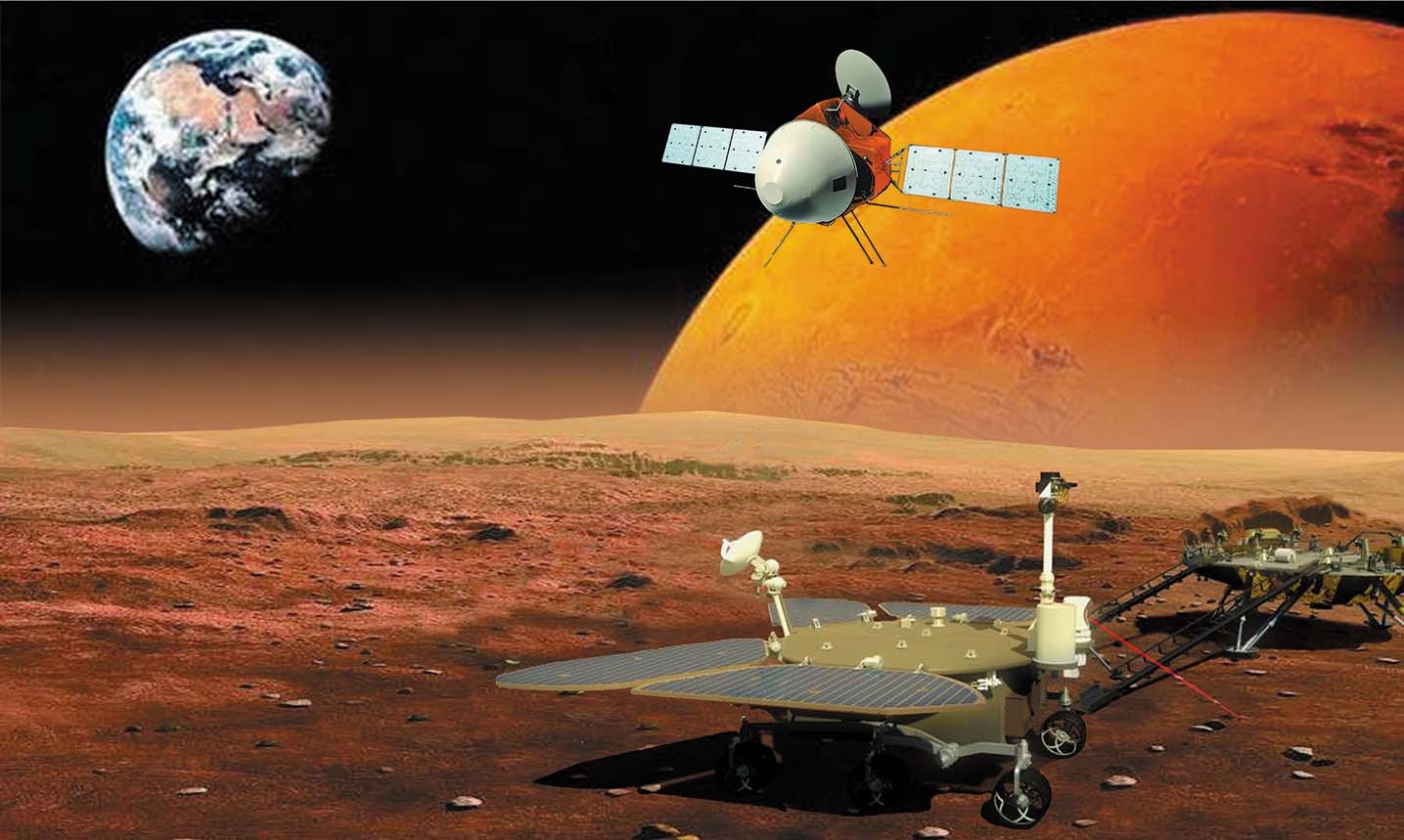
Just like the Hope Probe yesterday the radio signals reached Earth after the 11 minute one-way radio delay across the vast interplanetary gulf of some 119 million miles (191 million kilometers) – the time it takes for signals to reach Earth from Mars traveling at the speed of light.
China’s Tianwen-1 robotic mission will comprehensively investigating the Red Planet’s climate, atmosphere and geology and search for signatures of water as well as snapping numerous images from orbit with the orbiter and the surface from the lander and rover spacecraft.
China utilized its most powerful rocket – the relatively new heavy-lift Long March 5 – to hurl the combination Tianwen-1 orbiter and lander mission to Mars.
The Chinese Tianwen-1 spacecraft lifted off atop the Long March 5 carrier rocket from the seaside Wenchang Space Launch Center in southern China’s Hainan province on Thursday, July 23, at 12:41 a.m. EDT (0441 GMT; 12:41 p.m. Beijing time).
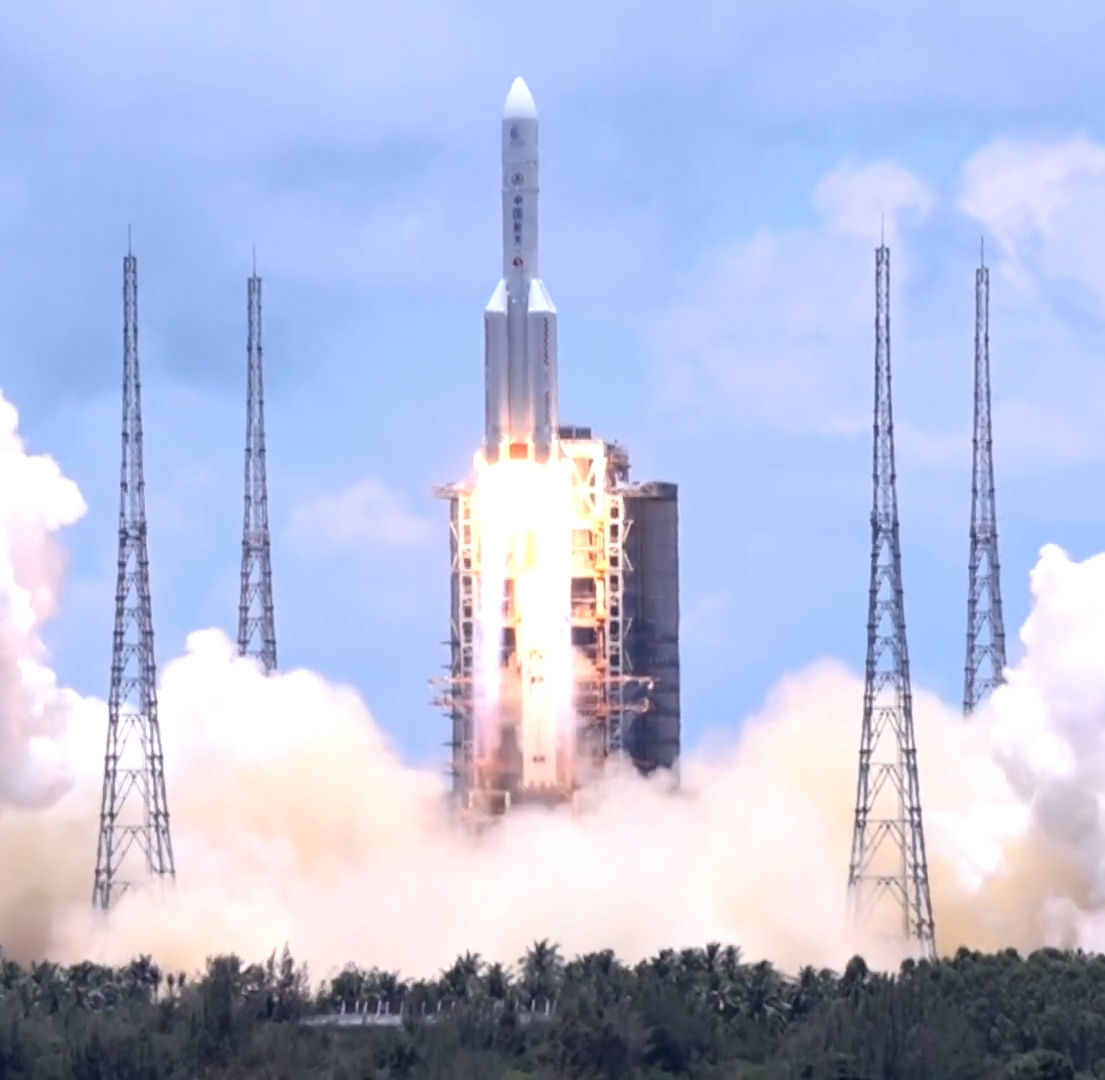
Over the past 7 months Tianwen-1 carried out four trajectory orbital correction maneuvers (TCMs) and a deep-space maneuver.
“Overall it has flown 475 million km and was 192 million km from Earth when it reached the Mars orbit.”
Communications with the probe is accomplished with a steerable radio telescope with a 70-meter-diameter antenna in Wuqing District of northern China’s Tianjin City is a key facility receiving scientific data sent back by the Mars probe.
Chinese engineers will now command the spacecraft to adjust its preliminary orbit, check out all systems and science instruments and take images to survey landing sites for the lander/rover components of the probe.
“Tianwen-1 will now conduct multiple orbital corrections to enter a temporary Mars parking orbit, surveying potential landing sites in preparation to land in May or June.”
Science observations could begin in 2 to 3 months.
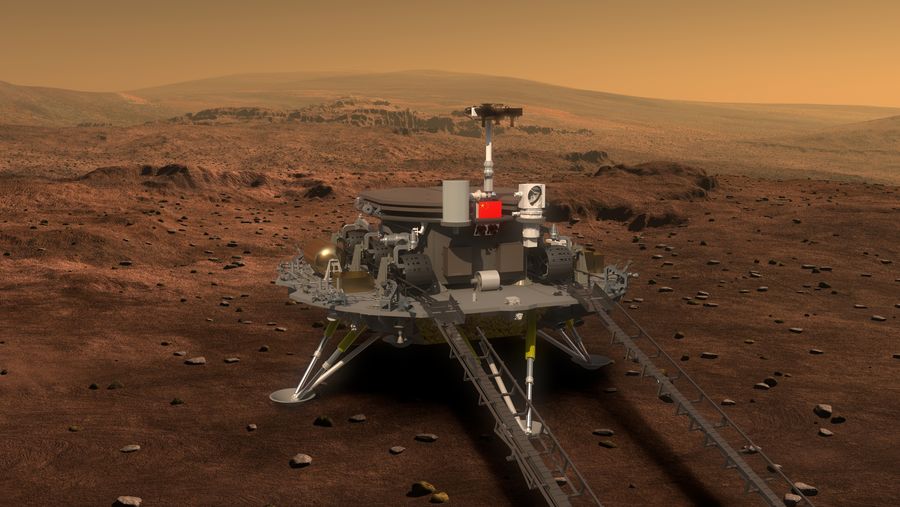
“China’s first Mars mission is named Tianwen-1, and aims to complete orbiting, landing and roving in one mission,” according to the mission team led by Wan Weixing, chief scientist of China’s Mars exploration program, in a paper just published before liftoff by the science journal Nature Astronomy.
“The name means ‘questions to heaven’, taken from the name of a poem by Qu Yuan (about 340–278 BC), one of the greatest poets in ancient China.”
Wan died in May after a long illness.
“The country’s first Martian probe will conduct scientific investigations about the Martian soil, geological structure, environment, atmosphere, as well as water,” CNSA said in a statement.
Altogether there are 13 science instruments included on the Tianwen-1 mission – seven on the orbiter and six on the rover/lander including cameras, spectrometers, ground penetrating radar
The prime landing site for the 529 pound (240 kg) solar-powered rover is in Utopia Planitia which will descend to the surface for a soft landing using parachutes, retrorockets and airbags – EDL similar to NASA’s landers and rovers.
The Mars rover has about twice the mass of China’s Yutu moon rovers.
After entering polar elliptical orbit in February 2021 ranging between 165 miles (265 kilometers) and nearly 7,500 miles (12,000 kilometers) the orbiter will deploy the rover/lander several months layer in May or June 2021.
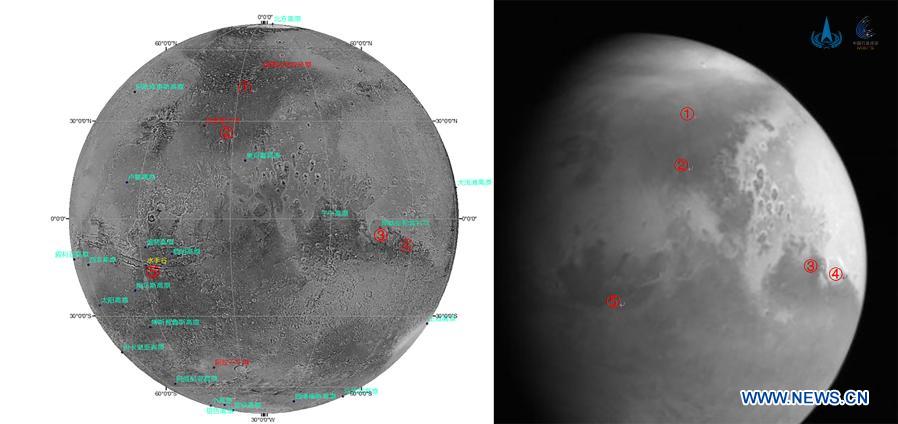
If all goes well the lander will then release the rover which will drive down a pair of tracks to the Martian surface – similar to how China’s two Yutu rovers drove onto the lunar surface.
The six-wheeled rover is expected to last about 3 months or 90 days and looks a lot like NASA’s Mars Exploration Rovers’ Spirit and Opportunity.
The orbiter will operate at least one Martian or two Earth years.
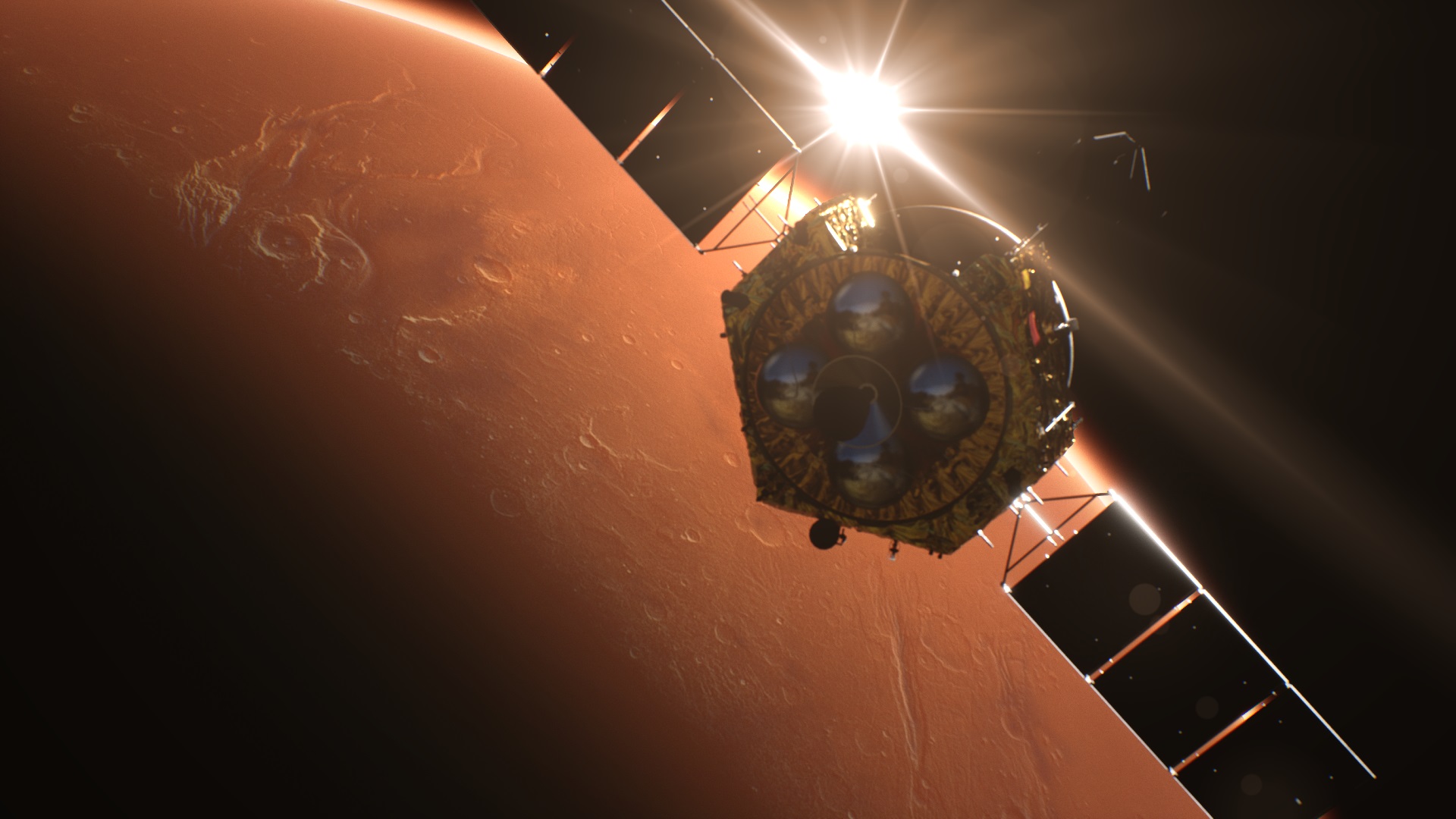
Here are further details about Tianwen-1 from the mission team paper:
The Tianwen-1 probe, with a mass (including fuel) of about 5 tonnes, comprises an orbiter and a lander/rover composite. The orbiter will provide a relay communication link to the rover, while performing its own scientific observations for one Martian year.
The orbit during the scientific observation stage is a polar elliptical orbit (265 km × 12,000 km).
The lander/rover will perform a soft landing on the Martian surface some 2–3 months after arrival of the spacecraft, with a candidate landing site in Utopia Planitia.
The ~240 kg solar-powered rover is nearly twice the mass of China’s Yutu lunar rovers, and is expected to be in operation for about 90 Martian days.
The main task of Tianwen-1 is to perform a global and extensive survey of the entire planet using the orbiter, and to send the rover to surface locations of scientific interests to conduct detailed investigations with high accuracy and resolution.
Specifically, the scientific objectives of Tianwen-1 include5: (1) to map the morphology and geological structure, (2) to investigate the surface soil characteristics and water-ice distribution, (3) to analyse the surface material composition, (4) to measure the ionosphere and the characteristics of the Martian climate and environment at the surface, and (5) to perceive the physical fields (electromagnetic, gravitational) and internal structure of Mars.
There are 13 scientific payloads in the Tianwen-1 mission in total.
The seven instruments on board the orbiter comprise two cameras, the Mars-Orbiting Subsurface Exploration Radar, Mars Mineralogy Spectrometer, Mars Magnetometer, Mars Ion and Neutral Particle Analyzer, and Mars Energetic Particle Analyzer.
The six instruments installed on the rover comprise the Multispectral Camera, Terrain Camera, Mars-Rover Subsurface Exploration Radar, Mars Surface Composition Detector, Mars Magnetic Field Detector, and Mars Meteorology Monitor.
Tianwen-1 is going to orbit, land and release a rover all on the very first try, and coordinate observations with an orbiter. No planetary missions have ever been implemented in this way.
If successful, it would signify a major technical breakthrough. Scientifically, Tianwen-1 is the most comprehensive mission to investigate the Martian morphology, geology, mineralogy, space environment, and soil and water-ice distribution.
Next up for Earth’s Invasion Fleet are arrival and touchdown of NASA’s Perseverance rover on Feb 18 as the UAE team continues checkout of the Hope Probe that arrived yesterday.
Watch Ken’s continuing reports about Artemis and NASA missions, SpaceX, Starlink, Commercial Crew and Starliner and Crew Dragon and onsite for live reporting of upcoming and recent SpaceX and ULA launches including Crew 1 & 2, Demo-2, ISS, X-37B, Solar Orbiter, Mars 2020 Perseverance and Curiosity rovers, NRO spysats and national security missions and more at the Kennedy Space Center and Cape Canaveral Space Force Station.
Stay tuned here for Ken’s continuing Earth and Planetary science and human spaceflight news: www.kenkremer.com –www.spaceupclose.com – twitter @ken_kremer – email: ken at kenkremer.com
Dr. Kremer is a research scientist and journalist based in the KSC area, active in outreach and interviewed regularly on TV and radio about space topics.
………….
Ken’s photos are for sale and he is available for lectures and outreach events
Please consider supporting Ken’s work by donating at Patreon:
https://www.patreon.com/kenkremer
x



